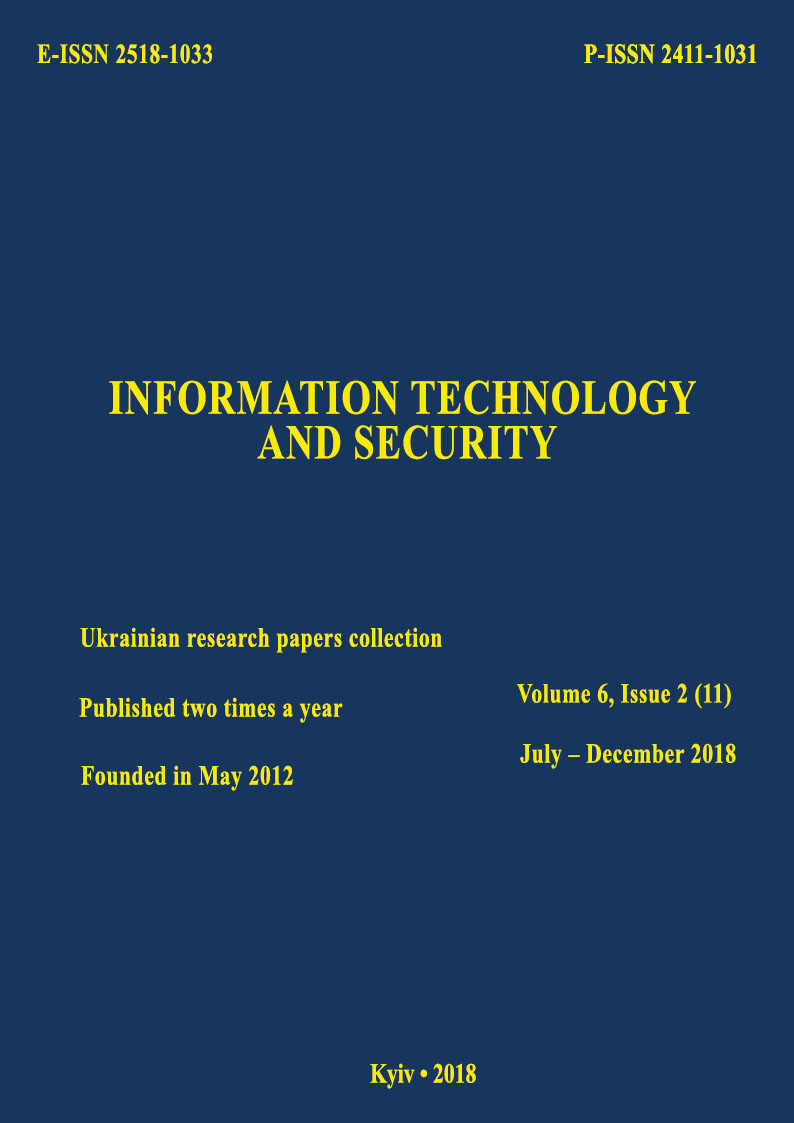Structural analysis of the compounds of integral objects
DOI:
https://doi.org/10.20535/2411-1031.2018.6.2.153491Keywords:
Structural analysis, structural equivalence, functional equivalence, integral object, integral objects compounds.Abstract
The article presents the results of research on methods of analysis of the structure of software, built on architecture based on integral objects. To determine the structural analysis operations, the representation of the compounds of integral objects in the form of formulas of compounds and tables were chosen, and operations of integration and disintegration of compounds were formalized. The integration of compound with formation of a new class consists in encapsulating the compound into the class shell with the integration degree of the class one greater than that of the compound, and the disintegration consists in the reverse process of extracting the compound from the class shell with a decrease of integration degree by one. The table representation of the compounds of objects, which includes both the representation of objects and the connections between them, allows us to apply formal methods for analyzing their structure. The notion of structural equivalence of two compounds as having the same composition and structure of the objects compounds is determined, as well as the notion of functional equivalence of two compounds as those implementing the same composition of functions. As the main structural analysis operations, two basic operations are presented ̶ the determination of the structural and functional equivalence of the two compounds. The determination of the equivalence of the compounds is reduced to comparing the table representation of the compounds, taking into account the permutation of the rows and columns of the tables. It is shown that the determination of structural equivalence is possible only for compounds of the same integration degree, and for the determination of functional equivalence, it is necessary to bring the compounds to the atomic level. The definition of functional equivalence is reduced to the determination of the structural equivalence of atomic formulas of compounds. The operations of recognition of structurally and functionally equivalent classes for a given compound are chosen as derivative operations, which are based on basic equivalence determination operations, as well as four operations of equivalent transformations of compounds: structurally and functionally equivalent replacement of a compound by an object of the equivalent class and partially structurally and functionally equivalent replacement of a fragment of a compound by an object of the equivalent class. Structural analysis operations are the basis for the equivalent transformation of compounds in the process of designing, verifying and optimizing the system of classes of the problem domain solution during software development.
References
A. Molchanov, “A Solution to the Equivalent Transformation Problem in a Class of Primitive Program Schemes”, Proc. Institute of System Programming of the Russian Academy of Sciences, vol. 27, no. 2, pp. 173-188, 2015.
R. I. Podlovchenko, “Primitive Program Schemes with Procedures”, Modeling and analysis of information systems, vol. 21, no. 4, pp.116-131, 2014.
R. I. Podlovchenko, “On the polynomial complexity of equivalence checking problem in algebraic models of programs”, Cybernetics and Systems Analysis, vol. 48, no. 5, pp.17-24, 2012.
V. Dubova, O. Nikitenko, and O. Glon, “Equivalence of uncertain algorithms”, Proc. Vinnytsia National Technical University, no. 2, pp.1-8, 2009.
V. Sokolov, “Application of functional and relational models in object-oriented programming”, Information Technology and Security, vol.5, iss. 1, pp. 42-54, 2017.
V. Sokolov, “Architecture of software based on integrated objects ”, Information Technology and Security, vol. 5, iss. 2, pp. 51-59, 2017.
Downloads
Published
How to Cite
Issue
Section
License
Copyright (c) 2020 Collection "Information technology and security"

This work is licensed under a Creative Commons Attribution 4.0 International License.
The authors that are published in this collection, agree to the following terms:
- The authors reserve the right to authorship of their work and pass the collection right of first publication this work is licensed under the Creative Commons Attribution License, which allows others to freely distribute the published work with the obligatory reference to the authors of the original work and the first publication of the work in this collection.
- The authors have the right to conclude an agreement on exclusive distribution of the work in the form in which it was published this anthology (for example, to place the work in a digital repository institution or to publish in the structure of the monograph), provided that references to the first publication of the work in this collection.
- Policy of the journal allows and encourages the placement of authors on the Internet (for example, in storage facilities or on personal web sites) the manuscript of the work, prior to the submission of the manuscript to the editor, and during its editorial processing, as it contributes to productive scientific discussion and positive effect on the efficiency and dynamics of citations of published work (see The Effect of Open Access).

